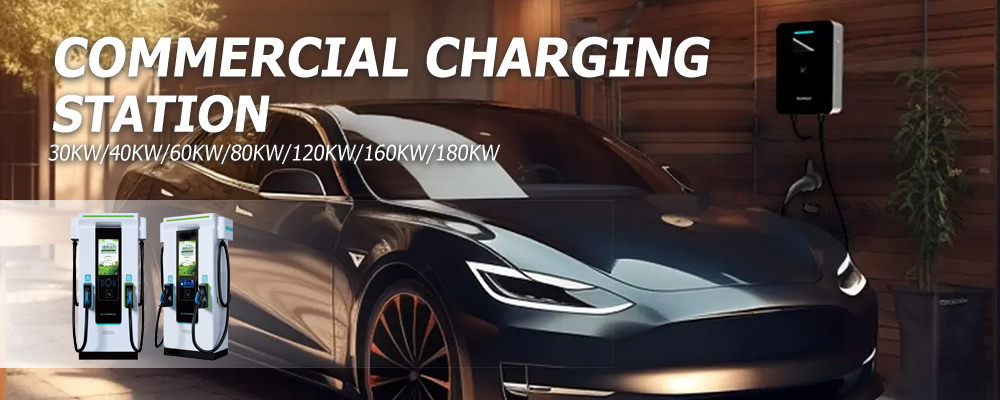Electric vehicles (EVs) are rapidly becoming mainstream, shifting not just how we drive, but also how we refuel. This transition hinges on the widespread availability of reliable and accessible charging infrastructure. As highlighted by global energy agencies [External link placeholder: e.g., Link to IEA Global EV Outlook or similar], the demand for charging points is skyrocketing. While public charging networks are crucial for long journeys, the convenience of charging at home and the strategic value of workplace or retail charging cannot be overstated. This article provides a comprehensive overview, comparing home EV charging stations, public EV charging stations, and commercial charging stations, detailing costs, technology choices (like the 7kW home charger), installation prerequisites, and the factors driving the business case for commercial deployment.
1. Home Charging: The Foundation of EV Convenience (Home EV Charging Station)
Argument: For most EV owners, the primary charging location is home. The ability to plug in overnight and wake up to a full battery offers unparalleled convenience and often lower running costs, especially when utilizing off-peak electricity rates. Installing a dedicated home EV charging station transforms the EV ownership experience, making daily commutes and errands effortless. This convenience factor is a major driver for EV adoption.
2. Decoding Home Charger Options (Home Car Charger, Wall-Mounted Charger)
Argument: While basic Level 1 charging (using a standard 120V outlet) is possible, it's extremely slow (2-5 miles of range per hour) and generally impractical for regular use. The standard for home charging is Level 2, which requires a dedicated 240V circuit. These chargers, often installed as wall-mounted chargers (or "wallboxes"), significantly reduce charging times compared to Level 1. Choosing the right home car charger involves considering charging speed needs and home electrical capacity.
3. The 7kW Home Charger: A Popular & Practical Choice
Argument: Among Level 2 options, the 7kW home charger (typically drawing 30-32 Amps on a 240V circuit) represents a sweet spot for many homeowners. It provides a substantial speed increase over Level 1 (adding 20-30 miles of range per hour), allowing most EVs to be fully charged overnight (4-10 hours). Importantly, its power requirement is often manageable for existing home electrical panels (especially in newer homes) without necessitating major, costly upgrades, balancing performance with installation feasibility.
4. Electrical Assessment: The Crucial First Step for Home Installation
Argument: Before installing any Level 2 home EV charging station, a thorough assessment of your home's electrical system by a qualified, licensed electrician is non-negotiable. This involves checking the main panel's capacity, available breaker slots, and performing a load calculation to ensure the system can safely handle the continuous power draw of the charger alongside other household appliances. Ignoring this can lead to safety hazards and system failures. [External link placeholder: Link to a guide on home electrical panel assessment or safety standards].
5. Safety & Professional Installation: Non-Negotiables for Home Charging
Argument: Level 2 EV charging involves significant electrical loads sustained over long periods. Using incorrect wiring, substandard outlets (standard dryer outlets are often insufficient), or attempting a DIY installation poses serious risks, including overheating, component melting, and electrical fires. Professional installation using high-quality, commercial-grade materials and adherence to local electrical codes are paramount for safe and reliable operation of your home car charger.
6. Commercial EV Charging: Beyond Convenience - A Strategic Investment (Commercial Charging Station)
Argument: For businesses and commercial properties, installing commercial EV charging stations is evolving from an amenity to a strategic necessity. It supports corporate sustainability goals, enhances property value, attracts and retains EV-driving customers and employees, and can even open up new revenue streams. As EV adoption grows, properties offering reliable charging will hold a competitive advantage. [External link placeholder: Link to a study on EV charging impact on commercial property value or tenant attraction].
7. Understanding Commercial Charger Levels & Costs (Commercial EV Charging Station)
Argument: Commercial properties typically deploy Level 2 or Level 3 chargers:
Level 2: Ideal for locations where vehicles park for extended periods (hours) like workplaces, multifamily housing, hotels, and theme parks. Hardware costs range roughly from $500 to $10,000 per unit, depending on features (smart capabilities, multiple ports, pedestal vs. wall-mount). Installation costs ($600 - $12,700+) vary significantly based on site complexity, distance to power, trenching needs, and necessary panel/infrastructure upgrades.
Level 3 (DC Fast Charging - DCFC): Best suited for high-traffic locations needing rapid refueling (30 mins - 1 hour), such as retail centers, grocery stores, or dedicated public charging hubs. Hardware is significantly more expensive ($20,000 - $50,000+ per unit), and installation costs can also reach up to $50,000+ due to the need for high-power 480V DC service and complex site preparation. Permitting and site prep are additional costs for both levels.
8. Factors Influencing Commercial Installation Costs & ROI
Argument: The total cost for a commercial EV charging station project goes beyond hardware. Key factors include: site assessment, electrical upgrades (potentially significant for DCFC), trenching, concrete work, network software/fees (for smart chargers), installation labor (requiring specialized expertise, especially for Level 3), permitting, and ongoing maintenance. However, various government incentives, tax credits, and utility rebates can substantially offset these initial costs. Furthermore, implementing effective revenue models (pay-per-use, subscriptions) can turn charging stations into profitable assets, positively impacting ROI. [External link placeholder: Link to a database of EV charging incentives like the US Dept. of Energy AFDC].
9. The Role of Public Charging Infrastructure (Public EV Charging Station)
Argument: While home and commercial charging cover many needs, a robust network of public EV charging stations, especially DC Fast Chargers along major corridors and in urban centers, is essential. It enables long-distance travel, serves drivers without access to home or workplace charging (e.g., apartment dwellers), and provides crucial backup. The reliability and accessibility of this public network directly influence consumer confidence in EVs.
(Conclusion & Summary)The transition to electric mobility relies on a multi-faceted charging ecosystem encompassing home EV charging stations, public EV charging stations, and commercial charging stations. For homeowners, understanding electrical needs, prioritizing safety through professional installation of devices like 7kW home chargers or wall-mounted chargers, unlocks the convenience of EV ownership. For businesses, deploying commercial EV charging stations represents a strategic investment with tangible benefits, despite varying costs associated with Level 2 and Level 3 hardware and installation. By carefully considering charger types, installation complexities, available incentives, and potential revenue streams, both individuals and organizations can effectively participate in and benefit from the growing EV charging infrastructure, paving the way for a cleaner transportation future.

